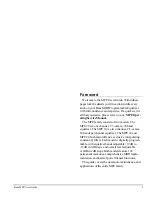
1961 OPERATORS’ MANUAL
9
!
Electric guitars often need a little EQ to add bite or presence. The High
Mid equaliser is ideally suited to this purpose and, depending on the
guitar sound sought, the 1.2kHz, 2kHz or 3kHz setting might be most
suitable. The degree of boost should be set by ear and the starting
Octave setting should be 1, though this may also be fine-tuned by ear.
Equalisation at the low end of the spectrum (80 - 125Hz) may also be
beneficial in controlling the amount of cabinet resonance added to the
sound. The High and Low-Pass filters are also useful in removing hum
and noise from the sound. Driving the output stage of the 1961 so as to
generate a little audible distortion can also help flatter most electric
guitar sounds, especially those generated using a solid-state preamp.
!
Acoustic guitars can sound boxy if miked from too close and a little cut
at 100Hz or 160Hz can help to even things out. If the sound is too 'flat',
try adding a little boost between 5kHz and 8kHz, and to thin out the
sound to make it sit nicely in a busy track, try using the High-Pass filter
to shave a bit off the bottom end.
!
Vocals: different vocalists require different treatment, but it is worth
keeping in mind that the human voice is a familiar sound to all of us,
and we soon notice if it has been over-treated. In general, use wide
Octave settings and gentle amounts of boost to polish the sound, and
by overdriving the tube output stage just slightly, a clinical solid-state or
moving-coil microphone takes on the warm transparency of a tube
microphone. The amount of overdrive should be set by ear and it is
essential to ensure that the amount of added distortion is not overtly
noticeable during loud passages.
Tip:
To create the maximum amount of tube distortion without apparently over-
equalising the signal, set the four bands to 80Hz, 400Hz, 2kHz and 6kHz
respectively, set all Octave controls fully clockwise and apply around 6dB of
boost on all controls. Adjust the input gain until the yellow Soft LED flashes on
signal peaks. Because a broad filter characteristic has been selected, the
overall signal level will increase and the degree of tube enhancement will be
maximised. This setting works particularly well on bass guitar, and after initial
setting up, the equaliser setting may be fine tuned to create exactly the right
sound.
































